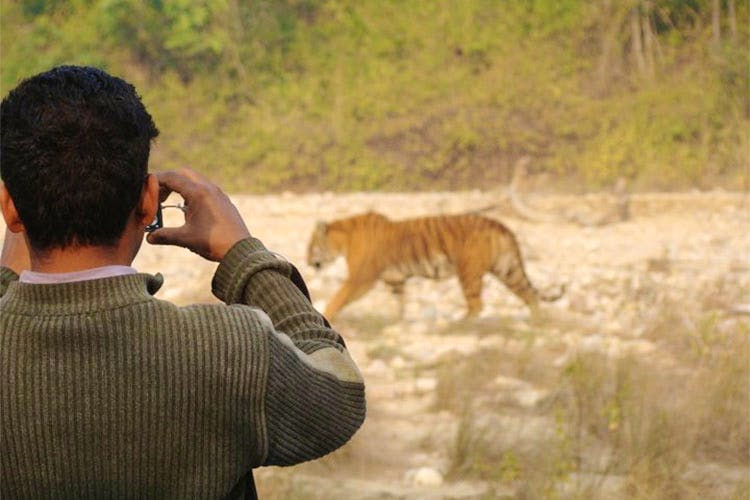With the advent of Project Tiger – the tiger conservation programme from the 1970s – India has made a concerted, if sometimes forgotten, effort to protect their tigers. This has led to a booming national park and resort business. With so many options, we picked five of our favourite tiger reserves to visit, to make the choice easier.
5 National Parks to Track Tigers
Jim Corbett National Park
The oldest national park in our country is also one of the most well-known. Jim Corbett National Park is divided into four sections that operate as per season. The endangered Royal Bengal Tiger, the Asian Elephant and the Grey Hornbills are the jewels in its crown. If you’re visiting to catch the animals, you’ll have to go in the peak summer months of March to June.
If you’re in the mood to take treks and safaris, while still staying in the lap of luxury, we love the look of the Aahana Corbett Resort, with its gorgeous Victorian-style residential blocks, pristine pool and eco-conscious efforts. There are, however, plenty of eco-resorts you can choose from.
Where: Nainital District, Ramnagar, Uttarakhand
Find out more here.
Kanha National Park
The beautiful park that inspired The Jungle Book, Kanha National Park is the state’s largest. With a big population of Royal Bengal Tigers, Indian leopards, barasingha and, unusually, sloth bears, Kanha has a large and diverse animal population. The park is closed from July to October, and visiting during the monsoon is not possible.
When visiting Kanha, the Soulacia Hotel & Resort is a good location to set up shop. The luxury eco-resort has comfortable, tasteful rooms and offers a variety of activities that showcase the park and local culture.
Where: Madhya Pradesh
Find out more here.
Sariska National Park
Only a few hundred kilometres from Delhi lies the Sariska National Park, the first reserve in the world to have successfully relocated tigers. They are only a few in number; its proximity to the city makes the park easily accessible to visitors. The ideal time to visit is between April and June.
Beyond tigers, one can find leopards, hyenas or jackals, and a host of Nilgai, Sambhar and antelope. The Sariska Bird Sanctuary in the park hosts a large number of migratory birds, making it a perfect sighting ground for birders.
Where: Alwar, Rajasthan
Find out more here.
Kaziranga National Park
Home to the Big Five – Rhino, Elephant, Tiger, Swamp Deer and Wild Buffalo – Kaziranga National Park is a slightly smaller, but richly diverse national park. The parks major claim to fame is currently hosting two-thirds of the world’s great one-horned rhino, but tiger sightings aren’t uncommon.
An interesting, and slightly different, way to explore Kaziranga is via cruise ship. The MV Mahabaahu cruise takes place up and down the Brahmaputra, and involves jeep, elephant and boat safaris on the shores of the park. Throw in a few visits to historic sights and luxurious cabins and you’ve got yourself a great adventure.
Where: Assam
Find out more here.
Ranthambore National Park
Ranthambore National Park is one of the most popular national parks in the travelling circles of Delhi. Named after the historic fort that lies within its borders, the park has over 40 species of mammals, 300 species of birds, 45 species of reptiles and over 300 species of plants.
Known for relatively {stress on relatively} easy sightings of tigers, the park draws large crowds from around the country. The best time for sightings is between November and May.
Where: Rajasthan
Find out more here.

